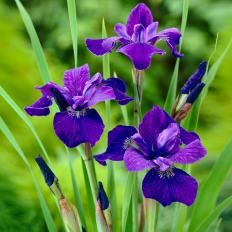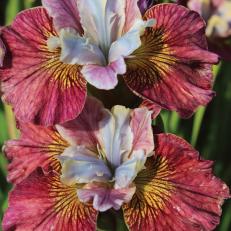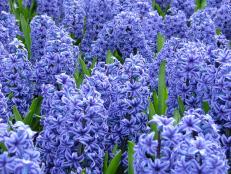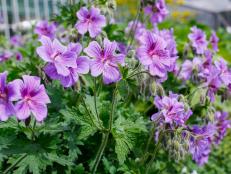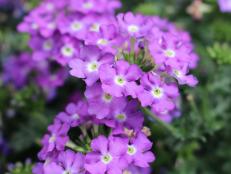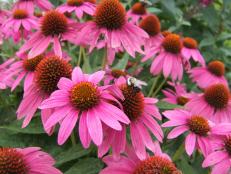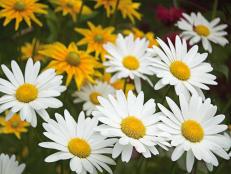Planting and Growing Siberian Irises
Discover the tough-as-nails beauty Siberian iris and learn how to use it in your garden.

Image courtesy of PerennialResource.com
‘Caesar’s Brother’ Siberian iris is one of the oldest Siberian irises—and one of the best. Plants tolerate wet and dry soil, making them a perfect choice for a rain garden. Flowers appear in late spring and linger into early summer. This iris is low maintenance and resists deer and rabbits. Hardy in Zones 3 to 8.
Give your garden a pop of color with Siberian irises. These low-maintenance bloomers open flowers from mid-spring to early summer, giving any landscape a reliable, long-lasting show.
Despite the name, Siberian iris aren’t native to Siberia, but hail from an area that runs from Northern Italy into Turkey and Southeastern Russia. Nevertheless, Siberian iris brings a sturdy presence to the garden, boasting winter hardiness from Zones 3 to 9.
Plant type: Herbaceous perennial
Botanical name: Iris sibirica
Flower Color: Shades of blue, purple, pink, red, white, yellow and orange
Bloom Time: Mid-spring to early summer
Height: 2 to 4 feet tall
Use: In a sunny, mixed perennial border that has good moisture. Also in a bog garden or near a water feature.
Hardiness: USDA Zones 3 to 9
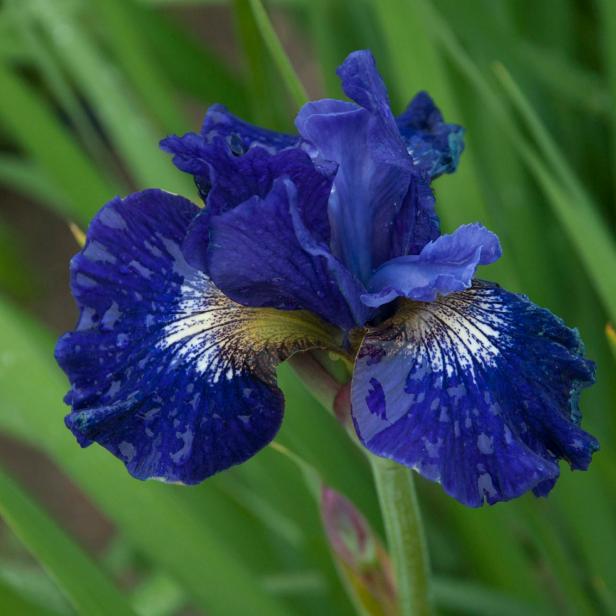
PerennialResource.com
Carefree Siberian iris is known as the go-to iris for Southern gardens.
Siberian irises are known botanically as Iris sibirica. They open flowers that have a classic iris form with several upright petals skirted by cascading petals known as falls. The most common color among Siberian iris is a purple or blue iris bloom. The blossoms are beardless, meaning they lack the line of fuzz that appears on the falls of a bearded iris flower.
13 Low-Maintenance Perennials 13 Photos
Discover easy-care perennials — including Siberian iris — that don't need frequent division to look their best.
Siberian iris grows two to four feet tall and has grassy leaves that arch over at the tips. The leaves form an attractive clump in the garden that’s virtually carefree. This perennial can easily grow into clumps that measure several feet across in the course of a few years. You’ll know you need to divide clumps when the center dies out or when flower number and size diminish.
Planting and Growing Siberian Iris
Light Requirement
This group of irises differs in other ways from their bearded iris cousins. Where bearded irises need full sun to flower, Siberian irises can tolerate some shade. In hot Southern locales, they prefer light shade during the hottest part of the afternoon. You’ll get the strongest flower display from Siberian iris in more temperate zones by siting plants in full sun.
Soil
Give Siberian iris soil that’s high in organic matter and slightly acid. Amending soil with compost, humus, composted oak leaves or peat moss can help maintain a slightly acid soil base. This iris prefers a moister soil. They’re often planted near pond edges, but while Siberian irises like moist soil, they cannot grow in standing water. This is the iris of choice for clay soils.
Cutting Flowers
After flowering, cut down spent flowers to prevent seed formation if you’re concerned about plants self-sowing. Siberian irises aren’t invasive, but will self-sow. If you let seed pods form, you’ll find they have sturdy stems and make nice additions to dried arrangements.
How to Use Siberian Iris
Plant Siberian iris en masse for full effect, using it in the front to the middle of a sunny, mixed perennial border that has good moisture. You can also plant in a bog garden or near a water feature.
Dividing Siberian Iris
The right time to divide Siberian iris depends on where you garden. In colder northern zones, divide plants in early spring (best time) or late summer (second-best time). In southern zones, divide plants in fall. In all cases, keep newly planted Siberian iris well-watered during their first year of growth and mulch plants for winter using several inches of a porous material that allows water to flow freely through it.
Siberian Iris Problems
Siberian Iris doesn't suffer from any serious pest or disease problems. It's less prone to iris borer and rot than bearded iris.
Selected Siberian Iris Cultivars
While purple and blue are the most common colors, there are Siberian iris cultivars that open flowers in shades of pink, red, white, yellow and orange, too. These are some top picks.
'Butter and Cream' — Creamy white standards complemented by lemon yellow falls. Rebloomer. Reaches 28 inches tall.
'Caesar's Brother' — Features gorgeous dark purple flowers. Reaches three feet tall.
'White Swirl' — Has white, ruffled flowers with a hint of yellow swirled in. Reaches about three feet tall.








